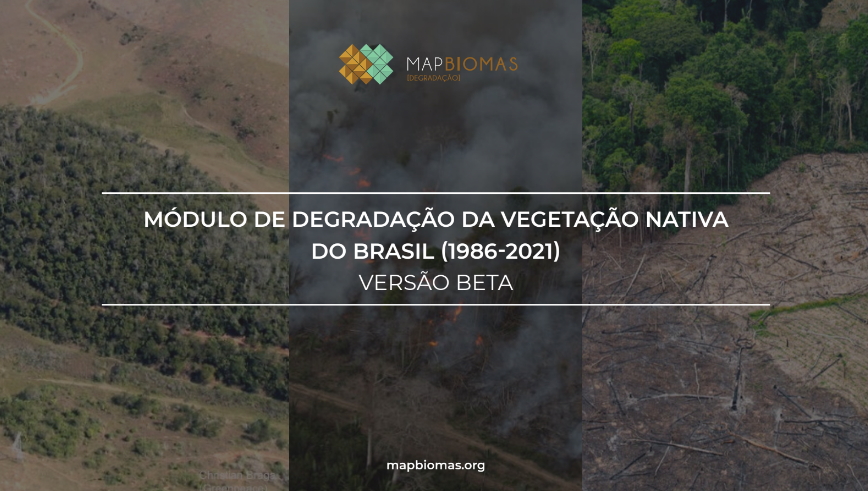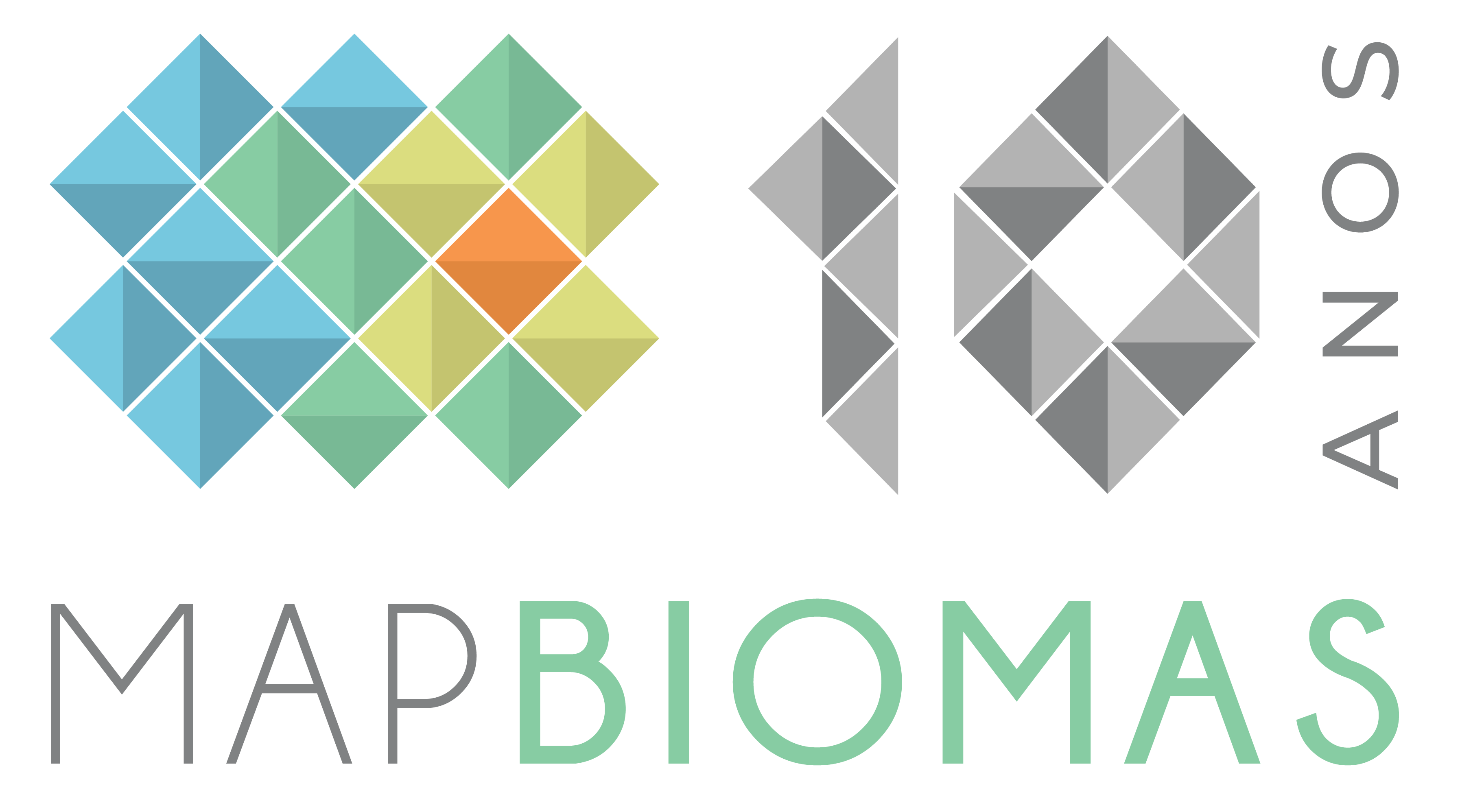Up to 25% of Brazil's native vegetation may be degraded
July 5th, 2024
A new platform from the MapBiomas network shows that between 1986 and 2021 Brazil had between 11% and 25% of its native vegetation susceptible to degradation. This corresponds to an area that could range from 60.3 million hectares to 135 million hectares.
More than half (64%) of Brazil is covered by native vegetation. The beta version of MapBiomas' degradation vectors platform makes it possible to generate unprecedented scenarios on the impact of various factors that can cause degradation on this type of vegetation throughout Brazil.
"This is the first time that degradation can be assessed in a broader way and in all Brazilian biomes, but we know that this degradation process occurs in other types of cover, such as agriculture and pasture, as well as soils and water, where we also intend to advance with this information in MapBiomas in the coming years," says Tasso Azevedo, general coordinator of MapBiomas.
>> Access the main highlights of the Degradation module
The degradation vectors considered by the MapBiomas team in this first edition of the platform include the size and isolation of the native vegetation fragments, their edge areas, the frequency of fire and the time since the last burn, as well as the age of the secondary vegetation.
The survey is limited to native vegetation and does not include degradation in anthropized areas, such as crops and pastures. Areas of gullies, desertification and the expansion of sands were also not analyzed. This means that the figures do not reflect the total degradation of Brazilian territory.
Atlantic Forest is the most degraded biome
The highest proportional values of areas susceptible to the degradation process are observed in the Atlantic Forest. Considering the range between a more restrictive scenario and a broader one, these values can vary between 36% (12 million hectares) and 73% (24 million hectares) of the area of native vegetation that remains in the biome.
"The high fragmentation of forest remnants in the Atlantic Forest is an important factor in the construction of these values. The combination of vectors such as edge area, fragment size and isolation of remnants shows that a large part of the biome is vulnerable to anthropogenic pressures, which can lead to both degradation and even the collapse of important areas for the conservation of the biome," warns Natalia Crusco, from MapBiomas' Atlantic Forest team.
Cerrado has the largest absolute area of degradation in Brazil
The range with the largest absolute degraded area in Brazil is in the Cerrado, where degradation can range from 18.3 million hectares to 43 million hectares - an area that corresponds to 19.2% and 45.3% of the remaining native vegetation in the biome, respectively.
"The Cerrado is a biome with a strong presence of agriculture, which is already quite fragmented, so edge areas are important vectors in the spread of invasive exotic species, such as African grasses. These grasses are one of the main threats to the biome, because in addition to reducing biodiversity, they significantly increase the available biomass and favor the occurrence of more frequent and intense fires than those the biome is adapted to," explains Dhemerson Conciani, a researcher at IPAM who is part of MapBiomas' Cerrado team.
Pantanal: fire as a factor in degradation
In the Pantanal, the degraded area can vary from 800,000 hectares (6.8%) to 2.1 million hectares (almost 19%). Although it is a biome that coexists with fire, the incidence of fires in the last five years has meant that 9% of the Pantanal's forest formations, which are fire-sensitive areas, have been damaged.
Eduardo Rosa, from MapBiomas' Pantanal team, points out that some of the vectors of degradation in the Pantanal that go beyond the analysis proposed here must take into account the entire biome's surroundings, since all the rivers that naturally irrigate the Pantanal plain are born in plateau areas. "The removal of native vegetation for agricultural and livestock expansion unprotects the soil and interferes with the distribution of water and sediment. The quantity and quality of water that reaches the plains also depends on dams and hydroelectric plants that alter the natural flow of water," he says. "Climate issues relating to rainfall and temperature regulate droughts and floods. The increase in periods of drought has hampered the resilience of the Pantanal ecosystem," he adds.
More than half of the Pampa's native vegetation may be degraded to some degree
In the case of the Pampa, the degraded area can occupy more than half of the remaining native vegetation in this biome, ranging from 1.7 million hectares (almost 19%) to 4.8 million hectares (55%).
"The Pampa is a biome that suffers a strong anthropogenic effect, with a very dense and ancient occupation. The fact that anthropogenic uses are distributed relatively evenly across the landscape greatly increases exposure to edge effects. In addition, at least a quarter of the grassland vegetation typical of the biome is secondary and in different stages of recovery. The panorama of the Pampa in terms of degradation is quite critical, especially as important vectors such as the invasion by African grasses and overgrazing due to excessive animal loads have not yet been assessed," comments Eduardo Vélez, from the Pampa MapBiomas team.
In the Caatinga, degradation can trigger desertification processes
It is estimated that in the Caatinga there may be 9 million hectares (just over 18%) to 26.7 million hectares (almost 54%) of possibly degraded vegetation. Analysis of the areas of native vegetation fragments in this biome, under different fragment size classes (3, 5, 10, 25, 50, 75 hectares), reveals that there has been an increase in fragmentation over the last 37 years. On average, regardless of size class, there has been a 1% increase in the area of fragments.
"In the Caatinga, these vectors of degradation associated with changes in land use and arid and semi-arid climatic conditions can contribute to increasing the limits of areas susceptible to desertification, where natural conditions are exhausted, causing the soil to deteriorate and even collapse," says Deorgia Souza, from MapBiomas' Caatinga team. "Mapping exposed soil in the Caatinga is one of the indicators of the desertification process and we intend to include it in the next version of the platform," she adds.
The Amazon has the second largest degraded area in Brazil
Brazil's largest biome, the Amazon, shows low percentages: from 5.4% to 9.8%. In terms of extension, however, the figures place it in second place among the most degraded biomes: from almost 19 million hectares to 34 million hectares - an extension second only to that of the Cerrado.
"Other vectors such as logging, the opening up of roads and water stress due to climate change are also important for understanding the process of degradation of the Amazon rainforest," points out Carlos Souza Jr., from MapBiomas' Amazon team. "These are additional indications that the degraded area in Brazil may be larger than we were able to identify with this platform," he adds.
What is degradation
Native vegetation (forests, savannas, grasslands, wetlands, etc.) is subject to two main types of threat: suppression (deforestation) and degradation. The first is when it is completely removed and replaced by some anthropogenic use (e.g. agriculture). In the second case, it is not removed, but suffers the effect of factors that alter its biological composition and functioning.
The degradation vectors considered by the MapBiomas team in this first edition of the platform include the size and isolation of native vegetation fragments, their edge areas, the frequency of fire, the time since the last burn and the age of secondary vegetation. There are other vectors that also lead to vegetation degradation, such as the invasion of exotic species, selective logging, overgrazing, excessive trampling by livestock, among others, but due to methodological limitations they could not yet be included.
The edge areasin other words, the contact areas between native vegetation and anthropogenic uses are vectors of degradation because the native vegetation is more exposed to the negative effects of winds, solar radiation and the drift of pesticides applied to adjacent crops. It can also suffer higher rates of animal predation and is more susceptible to human-induced fires.
Another vector assessed - the size of native vegetation fragments - is directly related to the quantity and variety of fauna and flora present. "The smaller the fragment, the greater the risk of local extinctions of species, the lower the probability of recolonization by individuals from other fragments and the greater the proportion of edge effects. This problem is even more serious if the small fragment of native vegetation is further away from larger fragments. Isolation compromises gene flow, preventing the arrival of new species or the replacement of those that have become locally extinct," explains Marcos Rosa, MapBiomas' technical coordinator.
Fire in native vegetation may or may not represent a degradation factor. This is because some types of natural vegetation, such as grasslands and savannas, have an evolutionary history of coexistence and adaptation to fire. In contrast, forest ecosystems are not adapted to frequent exposure to fire and are more susceptible to degradation caused by fires. Fire in these areas results in loss of biodiversity, soil degradation and changes in vegetation structure.
Secondary vegetation is an area that has been previously cleared and is in the process of regenerating from native vegetation. The functionalities of secondary vegetation in terms of climate, soil and water differ from those of primary vegetation. Over the years, the structure and functionality of fragments of secondary vegetation tend to improve due to the increase in diversity and species composition.
The effects of each of these vectors can be analyzed separately or together. Due to the particularities of each biome, the platform allows users to choose the intervals that represent the likely occurrence of degradation in the desired area. For the edge area, classes from 30m to 1000m are available on the platform. The size of the fragments can vary from less than 3 hectares to 75 hectares. The age of secondary vegetation, frequency and time since the last fire vary from 1 to 37 years. As a result, the platform allows for up to 4.9 million different intersections.
"Degradation is a process that, if reversed, allows the area to recover. But if it is not stopped, it can lead to collapse, i.e. the point at which it is no longer possible to recover the original characteristics," says Ane Alencar, IPAM's science director and coordinator of MapBiomas Fogo.
"The panorama revealed on the platform about the possible scenarios of degradation of native vegetation shows that, in addition to the concern with reducing deforestation, it is also important to take care of the current conditions of the remnants that still exist in the different Brazilian biomes, as well as restoring degraded areas," concludes Julia Shimbo, IPAM researcher and scientific coordinator of MapBiomas.


